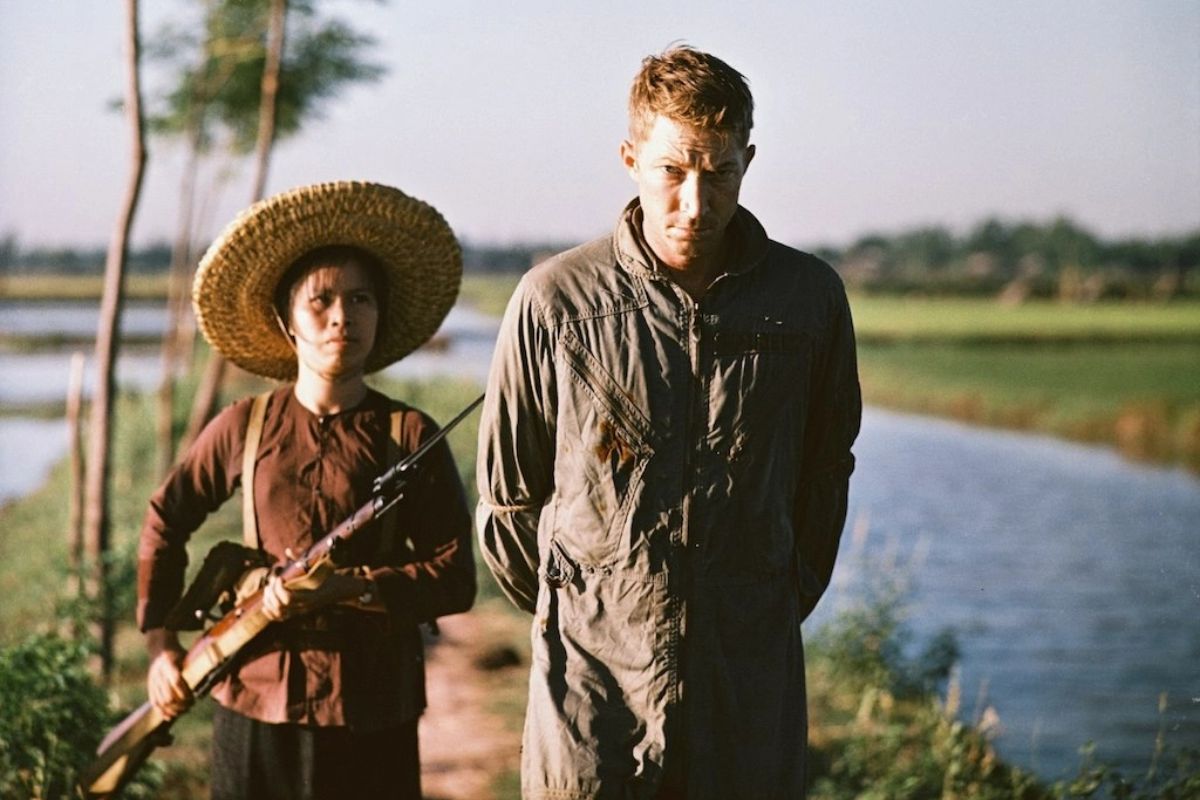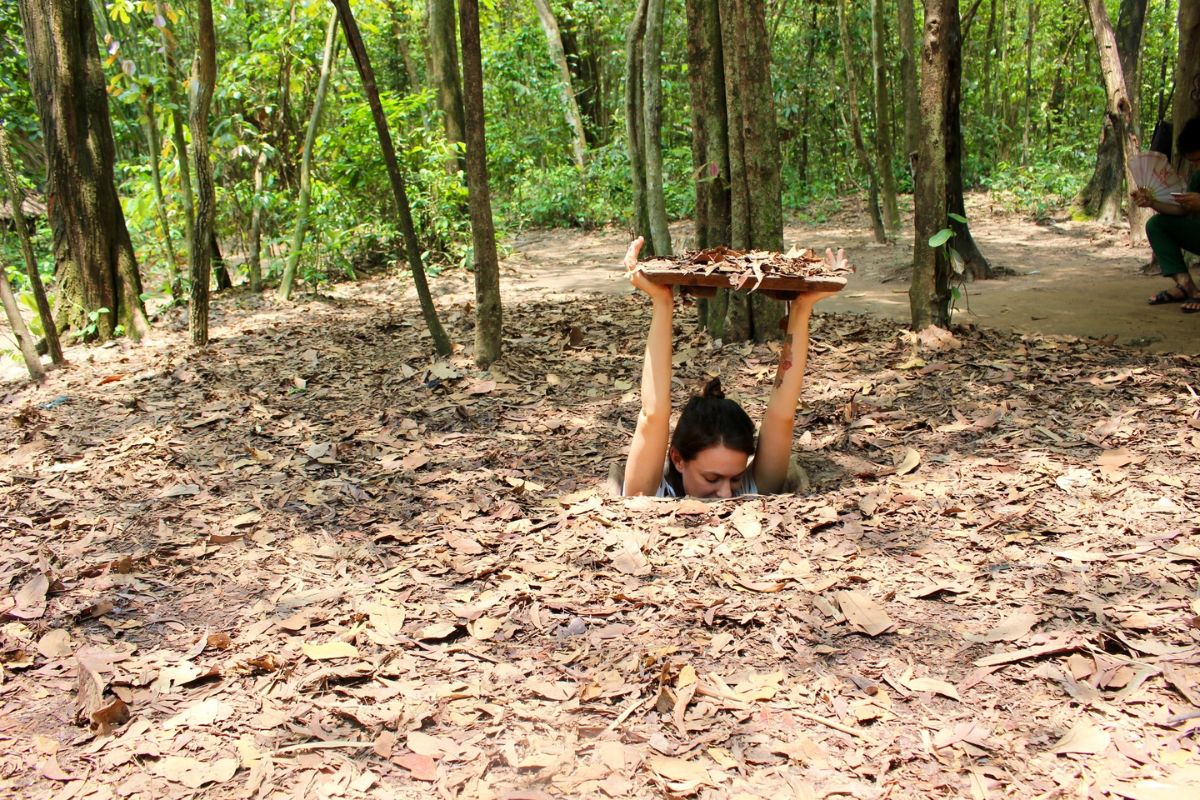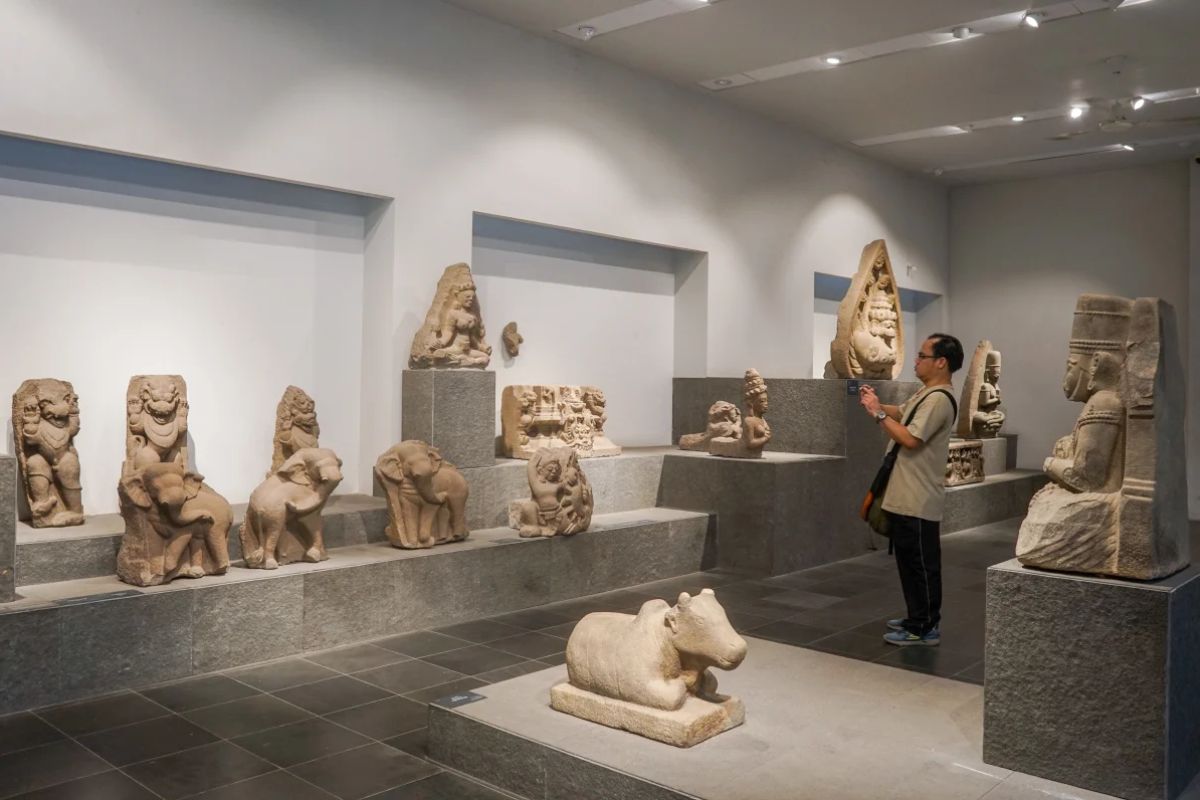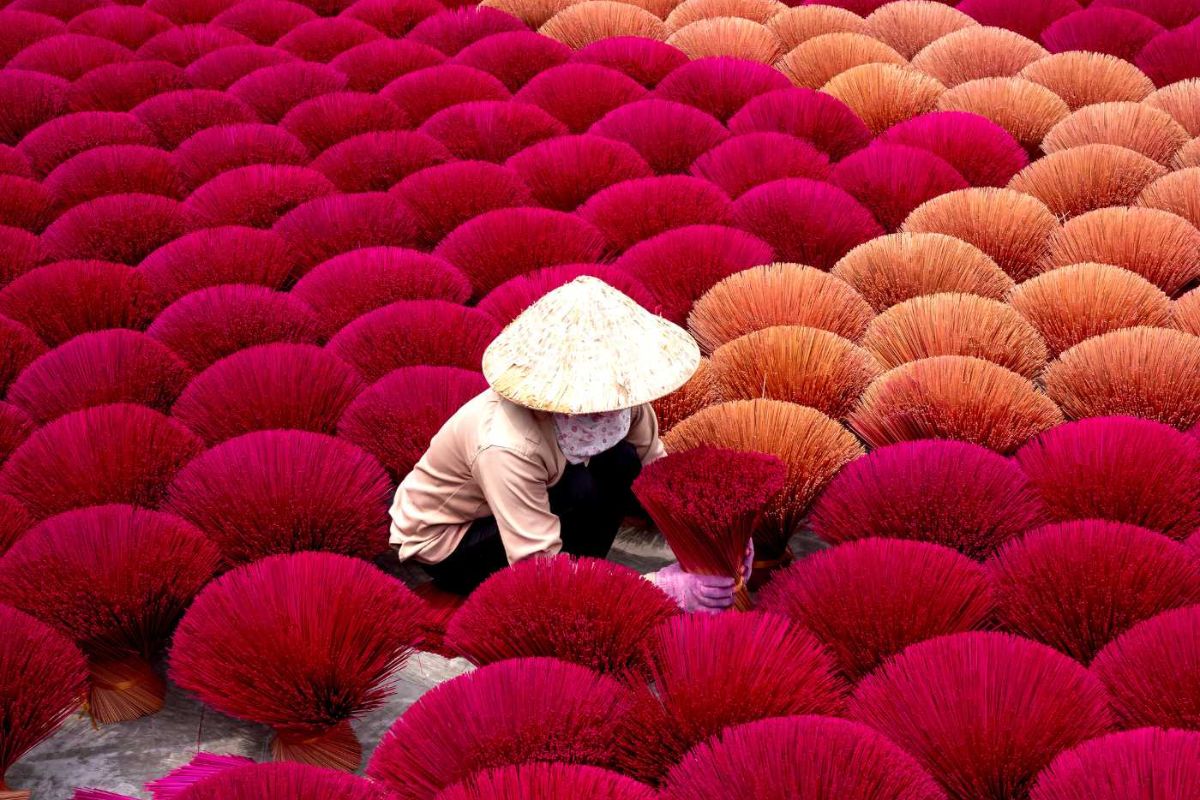TABLE OF CONTENT
During your Ho Chi Minh City trip, if you want to learn about Vietnam’s history, the Vietnam War tour Ho Chi Minh is a must-not-miss option. The historical documents that reenact the Vietnam War will give you a deeper insight into this beautiful and resilient country.

The Vietnam War stands as one of the most pivotal and poignant chapters in modern history. Its scars are etched into the landscape and culture of Vietnam, particularly in Ho Chi Minh City, formerly known as Saigon. A Vietnam War tour in Ho Chi Minh offers an immersive journey into the heart of this tumultuous period, providing visitors with a deeper understanding of the conflict and its enduring legacy. In this article, we’ll delve into seven places worth visiting on a Vietnam War tour Ho Chi Minh City, each offering unique insights into this transformative era.
Things to know about the Vietnam War
The Vietnam War, spanning from 1955 to 1975, was a multifaceted conflict rooted in historical, political, and ideological divisions. Emerging from the remnants of French colonial rule, Vietnam was partitioned into the communist North and the anti-communist South, setting the stage for a protracted struggle for reunification.
The war became a proxy battleground in the broader Cold War rivalry between the United States and the Soviet Union, with the former viewing it as crucial in containing the spread of communism in Southeast Asia. The conflict exacted a devastating toll on civilian populations, with widespread destruction, displacement, and long-term health consequences resulting from aerial bombing campaigns and the use of chemical defoliants like Agent Orange.

Despite the end of the Vietnam War in 1975 with the fall of Saigon, its legacy continues to reverberate in Vietnamese society and global geopolitics. The war left deep scars on the national psyche, prompting a collective determination to overcome adversity and pursue reconciliation.
In recent years, Vietnam has sought to normalize relations with the United States and address the lingering effects of Agent Orange and unexploded ordnance. Understanding the context and complexities of the Vietnam War is essential for appreciating the significance of historical sites and monuments on a Vietnam War tour Ho Chi Minh City, providing visitors with a deeper understanding of the conflict’s impact and the enduring lessons learned from this turbulent chapter in human history.
Vietnam War tour Ho Chi Minh City: Understand the Vietnam War
Cu Chi Tunnels
The first place to mention in the Vietnam War tour Ho Chi Minh City is Cu Chi Tunnels. Located approximately 70 kilometers northwest of Ho Chi Minh City, Cu Chi Tunnels is a remarkable testament to the ingenuity and resilience of the Vietnamese people during the Vietnam War. Stretching over 250 kilometers, this vast network of underground passages served as a crucial lifeline for the Vietnamese soldiers.
Constructed by hand using rudimentary tools, the Cu Chi Tunnels were a marvel of engineering, with multiple levels interconnected by narrow passageways. The tunnels served a variety of purposes, including living quarters, storage depots, command centers, and hospitals, enabling Vietnamese soldiers to operate covertly beneath the surface.

Visitors to the Cu Chi Tunnels can explore sections of the underground complex, gaining firsthand insight into the harsh realities faced by Vietnamese soldiers during the war. Guided tours offer the opportunity to crawl through narrow tunnels, examine booby traps and camouflaged entrances, and learn about the innovative tactics employed by the Vietnamese army to thwart enemy advances.
The Cu Chi Tunnels stand as a symbol of Vietnam’s enduring spirit and determination to overcome challenges, making them a must-visit destination for anyone seeking to understand the legacy of the Vietnam War.
Independence Palace
The Independence Palace, also known as the Reunification Palace, served as the official residence and workplace of the President of South Vietnam during the Vietnam War. On April 30, 1975, the soldiers of the Liberation Army of South Vietnam launched a decisive attack on the Independence Palace. This iconic moment saw a tank crashing through the palace gates, symbolizing the advance of the Liberation Army of South Vietnam to seize control, leading to the unconditional surrender of the Republic of Vietnam government. It was a historic moment for the country and the Vietnamese people, marking the liberation from the oppression of American imperialism and the reunification of the nation.

Today, the Independence Palace stands as a living monument to Vietnam’s tumultuous past, offering visitors a glimpse into the political dynamics and historical events that shaped the nation. On the Vietnam War tour Ho Chi Minh City, visitors can access the palace’s preserved rooms and chambers, including the presidential office, banquet hall, and telecommunications center.
By exploring the Independence Palace, visitors can gain a deeper understanding of the Vietnam War’s impact on the region and appreciate the resilience and determination of the Vietnamese people in their quest for independence and reunification. The palace’s significance as a symbol of national identity and sovereignty makes it a must-visit destination for anyone seeking to unravel the complexities of Vietnam’s past.
War Remnants Museum
The War Remnants Museum in Ho Chi Minh City is a pivotal stop on any Vietnam War tour Ho Chi Minh, offering a compelling and comprehensive narrative of the conflict’s impact. Originally known as the “Exhibition House for US and Puppet Crimes” when it was established in 1975, the museum was later renamed to reflect a broader perspective on the war and its aftermath.
Upon entering the museum, visitors are confronted with a collection of military hardware, including tanks, artillery pieces, and aircraft, displayed in the museum’s courtyard. These relics serve as tangible reminders of the destructive power unleashed during the war and set the tone for the exhibits that follow. Inside, the museum is divided into thematic sections, each addressing different aspects of the conflict, from the use of chemical weapons like Agent Orange to the experiences of Vietnamese civilians and soldiers.

Perhaps the most emotionally charged section of the War Remnants Museum is its display of the long-term health consequences of chemical warfare. Visitors are confronted with graphic images and information detailing the devastating impact of Agent Orange and other chemical defoliants on both the environment and human health.
>> Explore more: Vietnam Travel Guide – What To Know Before Your Journey
Dragon Wharf
Dragon Wharf holds a pivotal place in Vietnamese history as the departure point for Ho Chi Minh, the great leader of Vietnam, on his journey started in 1911. This voyage marked the beginning of Ho Chi Minh’s tireless efforts toward Vietnamese independence, making Dragon Wharf a symbolic site of revolutionary inspiration.
Today, Dragon Wharf stands as a living memorial to Ho Chi Minh’s revolutionary legacy, with the historic Dragon Wharf building preserved as a museum and cultural center. To honor the life and career of President Ho Chi Minh, the Ho Chi Minh Museum at Dragon Wharf was officially opened on September 2, 1979.

Visitors on a Vietnam War tour Ho Chi Minh can explore the Ho Chi Minh Museum’s exhibits, which offer a fascinating glimpse into Ho Chi Minh’s early life, his ideologies, and the socio-political landscape of early 20th-century Vietnam. Photographs, artifacts, and archival documents vividly depict the era’s tumultuous events, providing context for Ho Chi Minh’s journey and his subsequent role as a leader in the struggle for Vietnamese liberation.
Ho Chi Minh City History Museum
The Ho Chi Minh City History Museum stands as a significant destination on any Vietnam War tour Ho Chi Minh City. As visitors step into the museum, they are transported through time, with exhibits spanning from the pre-colonial era to the Vietnam War period and beyond.
The museum’s curated collection of artifacts, documents, and multimedia displays offers invaluable insights into the socio-cultural, economic, and political developments that have defined the city’s evolution. From the early days of Khmer settlement to the arrival of French colonialists and the subsequent struggles for independence, the museum provides a nuanced understanding of Ho Chi Minh City’s complex identity.

Of particular interest to those on a Vietnam War tour Ho Chi Minh City are the exhibits dedicated to the wartime era. Here, visitors can delve into the city’s role as a key battleground during the Vietnam War, exploring the political upheaval, military conflicts, and social transformations that characterized this tumultuous period. Photographs, archival documents, and personal accounts shed light on the experiences of Saigon’s residents amidst the backdrop of war, offering a poignant reminder of the human cost of conflict.
—
The Vietnam War, or the struggle for national independence, is a glorious part of Vietnam’s history. Participating in a Vietnam War tour Ho Chi Minh or visiting any war-related sites in the country becomes a cultural experience for both Vietnamese people and international tourists. The history of defending and liberating the nation is vividly recreated at various locations during the Vietnam War tour Ho Chi Minh. Don’t miss out on this journey if you love history, or simply have an appreciation for the country and its people!
To have the best Vietnam War tour Ho Chi Minh City experience, you should go with the most enthusiastic and knowledgeable tour guides. With experience, dedication, and thoughtfulness, Asia Encounter staff will help you explore and learn about the history of the war in Vietnam to the fullest. Each itinerary will be designed for each separate customer group, ensuring your trip will be the most detailed and unique. Contact Asia Encounter to plan your Vietnam trip today.




